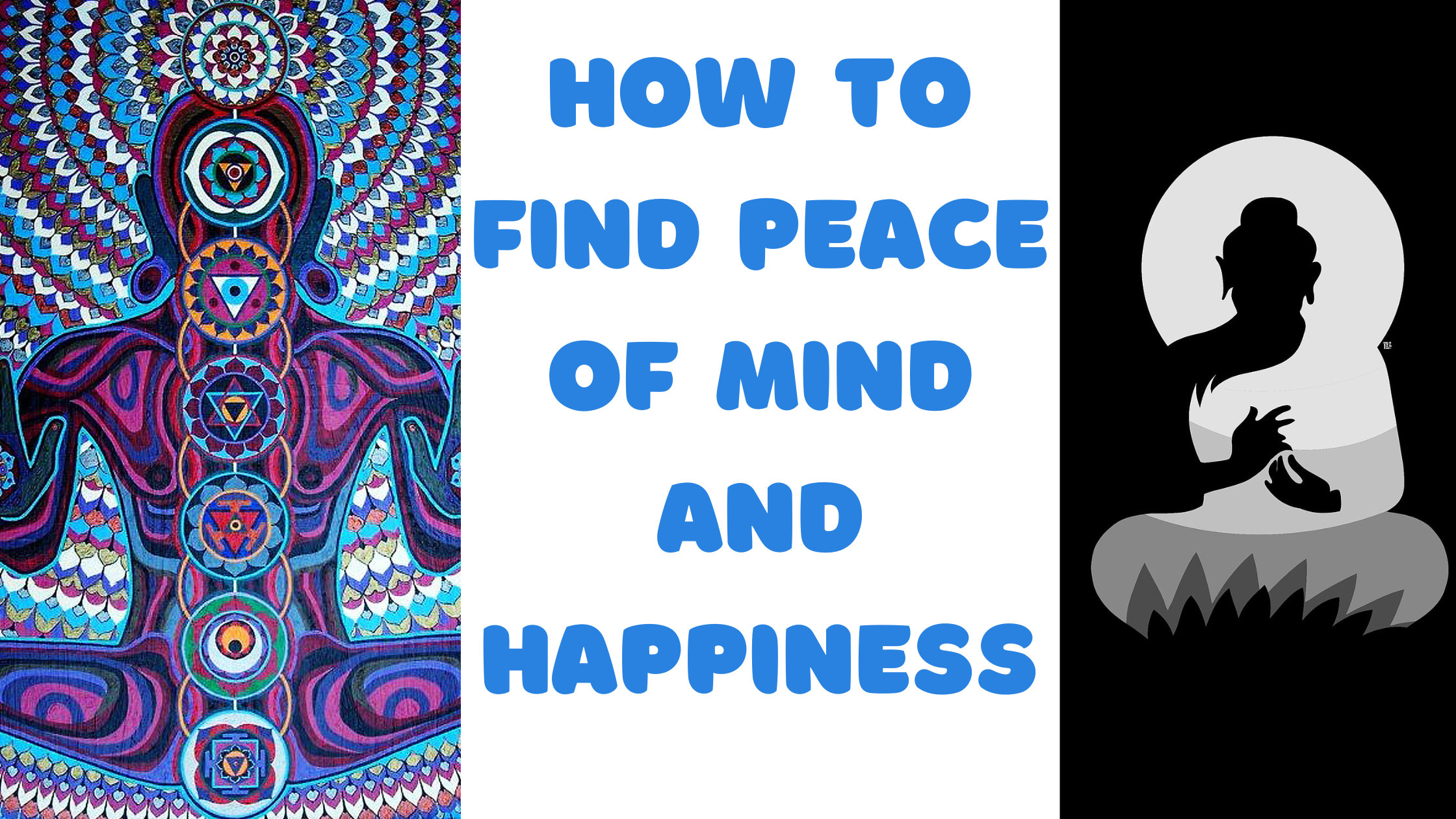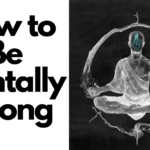Here is the best ways to find Peace of Mind or Inner Peace, 1. Meditation, 2. Acceptance & Letting Go, 3. Cultivate Gratitude, 4. Set a realistic goal, etc.
Table of Contents
ToggleIntroduction
In the chaos of our modern lives, finding inner peace and happiness becomes a paramount quest. This blog post aims to guide you through ten serene steps, each designed to bring tranquility and joy to your daily existence. Let’s embark on this journey towards a more peaceful and fulfilling life.
What is Peace of Mind (or Inner Peace)?
Peace of mind or inner peace refers to a state of mental and emotional tranquility, where an individual experiences a sense of calmness, contentment, and harmony within themselves. It involves a feeling of being at ease with one’s thoughts and emotions, regardless of external circumstances or challenges. Inner peace is often associated with a balanced and centered state of mind, free from excessive stress, worry, or anxiety.
Achieving inner peace does not necessarily mean the absence of difficulties or hardships in life but rather developing the ability to navigate challenges with a calm and resilient mindset. It involves self-awareness, mindfulness, and acceptance of the present moment. People often seek inner peace as a means to enhance overall well-being, improve mental health, and cultivate a more positive and fulfilling life. Practices such as meditation, mindfulness, and conscious living are commonly embraced to foster and maintain a state of inner peace.

How can we achieve peace of mind (inner peace)?
Achieving peace of mind, or inner peace, involves adopting various practices and perspectives to cultivate a sense of calm and contentment. Here are some strategies to help you achieve peace of mind:
1. Meditation (Dhyan)
Meditation is a powerful practice that plays a significant role in achieving peace of mind and promoting overall well-being. It involves training the mind to focus and redirect thoughts, ultimately leading to a heightened state of awareness and inner calm.
How to do meditation (Dhyan) ?
Choose a quiet and comfortable space where you won’t be easily disturbed. Sit on a cushion or chair with your back straight, hands resting on your lap, and your feet flat on the floor.
You can sit cross-legged on the floor, on a cushion, or in a chair. The key is to maintain a posture that is comfortable and allows you to stay alert.
Close your eyes and bring your attention to your breath. Notice the natural inhalation and exhalation. Be aware of the sensation of breath entering and leaving your body.
Allow your mind to be fully present in the moment. If your mind starts to wander, gently bring it back to the sensation of your breath. You can use a specific focus point, like the rise and fall of your chest or the feeling of air passing through your nostrils.
As thoughts arise, observe them without judgment. Acknowledge their presence, but don’t engage with them. Let the thoughts pass like clouds in the sky, returning your attention to your breath.
If you prefer, you can do a body scan meditation. Focus your attention on each part of your body, starting from your toes and moving up to the top of your head. Release tension as you go and bring awareness to each body part.
Alternatively, practice loving-kindness meditation by directing positive thoughts and wishes towards yourself and others. Repeat phrases like “May I (or others) be happy, may I (or others) be healthy, may I (or others) be safe, may I (or others) be at ease.”
When the meditation session is over, slowly open your eyes and take a moment to transition back to your surroundings. Notice any changes in your state of mind or body.

2. Acceptance and Letting Go
Acceptance and letting go are like giving yourself a big, comforting hug in the face of life’s ups and downs. It’s about saying, “Okay, this is how things are right now, and that’s alright.” Imagine loosening your grip on things that stress you out, letting them float away like leaves on a stream. It’s not about giving up but freeing yourself from the weight of trying to control everything. So, take a deep breath, embrace what is, and let go of what isn’t serving your peace of mind.
Learn to accept things that are beyond your control and let go of unnecessary worries. Understand that not everything can be changed, and dwelling on the uncontrollable aspects of life can create unnecessary stress.
3. Cultivate Gratitude
Cultivating gratitude is like planting seeds of positivity in the garden of your mind. It’s about taking a moment to appreciate the good things, big or small, that enrich your life. Imagine it as a daily ritual where you acknowledge the sunshine amid the clouds. Reflect on the people, experiences, and even the simple joys that make your heart smile. Gratitude isn’t just a feeling; it’s a practice that can transform your perspective and bring a warm glow to your everyday moments. So, water those gratitude seeds regularly, and watch them bloom into a more joyful and thankful you.
Say, “Thank You so much” to God who gave us such a wonderful and beautiful life. And make a prayer to God:-
“This devotee of yours, I surrender my body, mind, life, emotions, desires, thoughts and myself completely at your feet. And whatever you give, I will accept it as your command, grace and blessing.”
4. Set Realistic Goals
Setting realistic goals is like creating a roadmap for your dreams—one that leads to success without unnecessary detours. Picture it as a journey where you break down your aspirations into manageable steps, like stepping stones toward your destination. It’s about being kind to yourself, understanding your limits, and celebrating small victories along the way. These goals are like friendly guides, helping you navigate the path with confidence and purpose. So, dream big, but set goals that you can reach with dedication and a steady stride, making your journey more fulfilling and achievable.

5. Consider Karma as a Dharma
In the Bhagavad Gita, Lord Krishna imparts wisdom to Arjuna on the battlefield, emphasizing the importance of performing one’s duties (dharma) without attachment to the results (karma). The Gita encourages individuals to act selflessly, with a sense of duty and righteousness, understanding that the outcomes are not entirely in their control.
“Your right is to perform your prescribed duties only, but never to their fruits. Let not the fruits of action be your motive, nor let your attachment be to inaction.”
Lord Shri Krishna says the idea of performing one’s duties (dharma) without being overly attached to the results (karma). It encourages a selfless approach to actions, focusing on the fulfillment of duty rather than personal gains.
Considering karma as a dharma is like viewing your actions as a sacred duty or responsibility. Picture it as a ripple effect—whatever energy you put into the world comes back to you. When you treat others with kindness and positivity, that goodness circles back, creating a harmonious cycle. It’s about understanding that your actions carry weight and contribute to the energy you surround yourself with. So, embrace the idea of karma as your duty to spread positivity, knowing that the energy you send out finds its way back to you in one form or another.
6. Digital Harmony
Digital harmony is like finding the right balance in the digital world to enhance, rather than disrupt, your well-being. It’s about navigating the digital landscape with intention and mindfulness, ensuring that technology complements rather than overwhelms your life. Imagine it as a conscious dance between screens and real-life experiences.
Practice digital harmony by setting boundaries on screen time, taking breaks to connect with the tangible world around you, and fostering meaningful online interactions. Strive for a harmonious relationship with technology that contributes positively to your life without overshadowing the beauty of the offline moments. In this digital age, cultivating harmony ensures that technology serves as a tool for enrichment rather than a source of stress.

7. Practice Self-Compassion
Practicing self-compassion is like becoming your own best friend, someone who understands, supports, and cheers for you through thick and thin. It’s about treating yourself with the same care and kindness you’d naturally offer to a friend facing a tough time.
Imagine it as a warm, comforting conversation with yourself, where you say, “Hey, it’s okay not to be perfect. We all stumble, and that’s part of being human.” It’s like giving yourself a reassuring pat on the back and a gentle reminder that you’re doing your best.
So, be your own biggest supporter. When things get tough, instead of being hard on yourself, offer words of encouragement and understanding. Remember, you’re a work in progress, and that’s perfectly okay. Practicing self-compassion is like having your own personal cheerleader, always ready to lift your spirits and remind you that you’re deserving of kindness and love, especially from yourself.
8. Nurture Positive Relationships
Nurturing positive relationships is like tending to a beautiful garden filled with your favorite flowers. It’s about cultivating connections that bring joy, laughter, and warmth to your life – a garden where every person is a unique bloom, adding vibrant colors to your world.
Imagine it as a continuous conversation, a dance of shared experiences, and a harmony of understanding. Water these relationships with communication, sprinkle them with kindness, and watch them grow stronger. It’s the kind of garden where the more you give, the more it flourishes.
So, reach out to your friends and loved ones, share stories, lend a listening ear, and create memories together. Like a well-tended garden, positive relationships need attention, care, and a sprinkle of love. In this garden of connections, every smile, every shared moment, and every supportive gesture is a petal that makes your world more beautiful. Cultivate it, cherish it, and let the fragrance of positive relationships fill your life with joy.
Conclusion
Embark on this transformative journey by embracing these ten serene steps. Infuse your daily life with mindfulness, simplicity, and gratitude, and witness the blossoming of inner peace and joy. Remember, the pursuit of happiness is not a destination but a continuous, intentional journey that unfolds with each step you take.












Can you be more specific about the content of your article? After reading it, I still have some doubts. Hope you can help me.